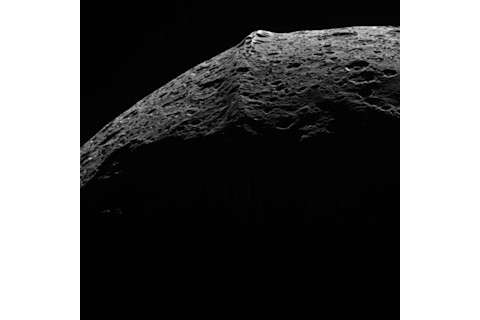
It may sound like something out of “Chicken Little,” but at some point in the history of Saturn’s moon Iapetus, the sky was actually falling: Scientists reported this week that an entire 800-mile-long mountain range along the moon’s equator formed after it fell from space. Iapetus doesn’t feature the telltale signs of volcanism and geologic activity that typically build mountains, which had made the existence of the bulging equatorial ridge a bit of a mystery. In a new study, researchers constructed 3-D maps of the mountain range using images captured by the Cassini spacecraft. By analyzing the shape of the triangular peaks, some up to 12 miles high, researchers concluded that the mountains were created from material that crashed onto the surface of Iapetus at some point in its history.
Viewing Iapetus From a New Angle
The researchers' hypothesis hinges on the observation that most peaks in the Iapetus range are steep, triangular peaks near their “angle of repose,” or the maximum angle objects, like rocks, can rest on a slope without falling down. If the mountain range were created through volcanism or tectonic forces, the shapes of the peaks would be more shallow and varied. Therefore, researchers claim their findings support the hypothesis of an “exogenic” — from outside the moon — origin of the Iapetus range. They published their findings online in arXiv
, but the study hasn’t yet been peer reviewed.
Tying Together Loose Ends
Researchers believe the mountain range formed after Iapetus collided with another large planetary body, similar to the collision that created our moon. The crash ejected material into orbit that formed a temporary ring around Iapetus, but the unstable ring eventually collapsed and smashed back to the surface, creating the mysterious mountain range. A massive planetary collision could also help explain Iapetus’ lopsided orbit, and why one side of the moon always faces away from Saturn. Photo Credit: NASA













